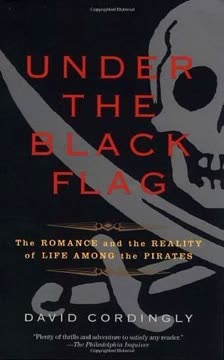Key Takeaways
1. Piracy: A Brutal Reality Behind the Romantic Myth
Reason tells us that pirates were no more than common criminals, but we still see them as figures of romance.
Myth vs. reality. The popular image of pirates, shaped by fiction like Treasure Island and Peter Pan, is one of romantic outlaws or jovial rogues. In reality, pirates were violent criminals who used force, torture, and murder, often inflicting horrific cruelties on their victims.
Acts of terror. Pirate attacks were frequently accompanied by extreme brutality. Examples include:
- Chinese pirates nailing victims to decks and eating their hearts.
- Cuban pirates hacking and stabbing captured crews to death.
- Buccaneers using burning matches between fingers or twisting cords around heads until eyes burst.
Not Robin Hoods. Unlike the fictional portrayals, real pirates were not maritime versions of Robin Hood. Their primary motivation was plunder, and they showed little mercy to those who resisted or concealed valuables, making their reality far grimmer than the romanticized versions.
2. Buccaneers: Caribbean Hunters Who Became Spanish Main Raiders
The original buccaneers were hunters in the woods and valleys of Hispaniola, the mountainous Caribbean island which is now Haiti and the Dominican Republic.
Origins in hunting. The term "buccaneer" initially referred to French hunters on Hispaniola who smoked meat over a frame called a "boucan." Driven out by the Spanish, they migrated to the coast and the island of Tortuga, turning to raiding Spanish ships and settlements.
Brethren of the Coast. These diverse groups of hunters, runaway slaves, and adventurers formed a loose confederation known as the Brethren of the Coast. They launched combined raids on major Spanish targets, becoming a significant threat in the Caribbean during the 17th century.
Licensed pirates. While often acting as outright pirates attacking any ship, many buccaneers operated with commissions (letters of marque) from English or French governors, particularly from Jamaica and Tortuga, making them technically privateers during times of war with Spain.
3. Henry Morgan: The Buccaneer Leader Who Became a Knighted Governor
On August 25, 1688, the greatest of the buccaneers died at home on his estate in Jamaica.
From soldier to admiral. Henry Morgan, a Welshman, rose through the ranks of privateers raiding Spanish towns in Central America. Following the death of Edward Mansfield, Morgan became Admiral of the Brethren of the Coast, leading devastating attacks on key Spanish ports.
Spectacular raids. Morgan's most famous exploits included the sacking of:
- Portobello (1668): A bold land attack yielding immense treasure.
- Maracaibo (1669): Tricking a Spanish fleet to escape a trap.
- Panama City (1671): A difficult march and battle leading to the city's destruction.
Political maneuvering. Despite his piratical actions (often during peacetime), Morgan was knighted and appointed Lieutenant Governor of Jamaica. He successfully defended the island and managed his estates, though his later years were marked by ill health and disputes.
4. Women Pirates: Rare Figures Who Defied Gender Norms at Sea
Although they were dressed in men’s jackets and long trousers, two of the pirates were women.
Breaking the mold. While seafaring was overwhelmingly male, a few women defied convention to become pirates. The most famous were Mary Read and Anne Bonny, who sailed with Calico Jack Rackam in the early 18th century, dressing as men and fighting alongside the crew.
Notable female figures. Beyond Read and Bonny, other women achieved prominence in piratical contexts:
- Alwilda: A legendary Scandinavian princess who led pirates in the Baltic.
- Grace O'Malley: An Irish chieftain who commanded ships and forces in the 16th century.
- Mrs. Cheng (Ching Shih): A former prostitute who led a massive pirate confederation in the South China Sea in the early 19th century.
Challenges and disguise. Women going to sea faced immense challenges, including prejudice and the physical demands of shipboard life. Those who succeeded often did so by disguising themselves as men, proving their capability in battle and seamanship.
5. Pirate Life: Governed by Codes, Marked by Violence and Drink
In a pirate ship, the captain was elected by the votes of the majority of the crew and he could be deposed if the crew were not happy with his performance.
Democratic organization. Unlike naval or merchant ships, pirate vessels often operated under democratic codes or articles agreed upon by the crew. These articles governed:
- Election and deposition of captains and officers (like the quartermaster).
- Distribution of plunder (shares for officers, men, and boys).
- Compensation for injuries (fixed payments for lost limbs or eyes).
- Rules for gambling, lights out, and settling disputes (often duels ashore).
Harsh realities. Despite the democratic structure, pirate life was often brutal. It was characterized by:
- Prodigious drinking and gambling, leading to frequent quarrels.
- Casual violence and cruelty, sometimes for entertainment or revenge.
- Short careers, often ending in death in battle or by execution.
Recruitment. The majority of pirates were former seamen from the merchant service or navy, often driven to piracy by harsh conditions, unemployment, or capture. Some were forced, while others joined voluntarily for the lure of plunder and freedom.
6. Pirate Ships: Speed, Seaworthiness, and Adaptability Were Key
A fast ship enabled the pirates to catch their prey and to make a quick getaway, “a light pair of heels being of great use either to take or to escape being taken” in the words of Captain Johnson.
Ideal characteristics. Pirate ships needed to be fast to pursue victims and evade naval patrols, seaworthy to survive storms and make long voyages, and adaptable to be fitted with additional guns and accommodate large crews.
Common types. While large ships (like Blackbeard's Queen Anne's Revenge or Roberts' Royal Fortune) were used by famous captains, the most common pirate vessel was the sloop.
- Sloops: Single-masted, fore-and-aft rigged vessels, particularly fast Bermuda or Jamaica sloops.
- Ships: Three-masted, square-rigged vessels, often captured merchantmen or former warships.
- Brigs/Brigantines/Schooners: Two-masted vessels, less common in the early Golden Age.
Adaptations. Captured vessels were often modified for pirate use. This included:
- Removing internal bulkheads to create clear gun decks.
- Adding more guns and swivel guns.
- Lowering forecastles and quarterdecks to create flush decks for fighting.
7. Pirate Havens: Remote Islands and Coasts Offered Refuge
Madagascar, in the Indian Ocean, was another island which acquired a legendary status as a haunt of pirates.
Strategic locations. Pirates needed safe places to rest, repair ships (careening), obtain supplies, and divide plunder, away from the authorities. These havens were often remote islands or coastal areas with sheltered anchorages.
Key pirate strongholds:
- Port Royal, Jamaica: A major base for buccaneers in the 17th century, known for its wealth and debauchery, until devastated by an earthquake in 1692.
- Tortuga: A small island off Hispaniola, an early stronghold for French and English buccaneers.
- New Providence, Bahamas: Nassau harbor became a major pirate rendezvous in the early 18th century, housing hundreds of pirates until suppressed by Governor Woodes Rogers.
- Madagascar: Islands like Sainte Marie became bases for pirates operating in the Indian Ocean, trading looted goods with corrupt merchants.
- Bay of Campeche/Honduras: Logwood cutting communities provided temporary refuge and recruits.
Temporary safety. Even in these havens, pirates were not always secure. Naval patrols, internal disputes, and conflicts with local populations could disrupt their settlements.
8. Buried Treasure: A Myth Largely Popularized by Captain Kidd
Although buried treasure has been a favorite theme in the pirate stories of fiction, there are very few documented examples of real pirates burying their loot.
Fiction vs. fact. The enduring image of pirates burying chests of gold and silver, often marked on a map with an 'X', is primarily a creation of fiction, most notably Robert Louis Stevenson's Treasure Island.
Rare instances. While pirates certainly acquired treasure, they typically spent it quickly on drink, gambling, and women. Documented cases of burying treasure are rare and often involved specific circumstances:
- Francis Drake: Buried silver temporarily near Nombre de Dios after a raid, retrieving it shortly after.
- Captain Kidd: Left goods and treasure on Gardiners Island before his arrest, which were later recovered by the authorities.
Kidd's legacy. Captain Kidd's story, particularly the rumors of treasure left on Gardiners Island, fueled the myth. His notoriety, trial, and execution cemented his place in legend, disproportionately linking him to the idea of buried pirate treasure.
9. Naval Suppression: Warships and Privateers Hunted Down Pirates
The most effective weapon against the elusive pirates... was a formidable fighting machine...
Increased pressure. Facing mounting complaints from colonies and merchants, the British authorities increased efforts to suppress piracy in the early 18th century. This involved deploying more Royal Navy warships to pirate-infested areas.
Key naval actions. While pirates often evaded capture, significant battles occurred:
- Ocracoke Inlet (1718): Lieutenant Robert Maynard of HMS Pearl cornered and killed Blackbeard in a fierce boat action.
- Cape Lopez (1722): Captain Chaloner Ogle of HMS Swallow defeated Bartholomew Roberts' squadron, killing Roberts and capturing over 250 men.
- Off Long Island (1723): Captain Solgard of HMS Greyhound engaged Edward Low's sloops, capturing one and scattering the pirates.
Privateer commissions. Colonial governors also issued letters of marque to private ships, authorizing them to hunt pirates. Figures like Jonathan Barnet and Colonel William Rhett successfully captured notable pirates like Calico Jack and Stede Bonnet.
10. Trials & Hangings: Public Spectacle and Mass Executions Ended an Era
For more than four centuries pirates were hanged at Execution Dock on the north bank of the Thames.
Legal framework. The Act for the More Effectual Suppression of Piracy (1700) allowed Vice-Admiralty Courts in the colonies to try pirates locally, often presided over by the governor. This streamlined the process and increased the rate of convictions.
Public spectacle. Pirate trials and executions were public events, intended as deterrents. Hangings often took place "within the flood marks" near ports, and the bodies of notorious pirates were sometimes tarred and hung in chains at prominent locations.
Mass executions. Unlike earlier periods where only leaders might be executed, the early 18th century saw mass hangings of entire pirate crews.
- 1718: 30 of Stede Bonnet's crew hanged in Charleston.
- 1722: 41 of Matthew Luke's crew hanged in Jamaica.
- 1723: 52 of Bartholomew Roberts' crew hanged in Africa; 25 of Edward Low's crew hanged in Rhode Island.
Swift decline. The combination of increased naval patrols, successful captures, and the high rate of execution effectively decimated the pirate population and brought the Golden Age of Piracy to a rapid close by the mid-1720s.
11. The Enduring Romance: Fiction Shaped the Popular Pirate Image
Since piracy is simply armed robbery on the high seas, and has been accompanied by a catalog of cruelties and atrocities, it is surprising that it should have acquired a comparatively glamorous image.
Literary influence. The romantic image of pirates owes much to literature.
- Captain Charles Johnson's A General History of the Pyrates (1724) provided vivid, though sometimes embellished, accounts that became source material.
- Lord Byron's epic poem The Corsair (1814) introduced the brooding, noble outlaw figure.
- Robert Louis Stevenson's Treasure Island (1883) cemented images of treasure maps, tropical islands, wooden legs, and parrots.
- J.M. Barrie's Peter Pan (1904) created the memorable, aristocratic villain Captain Hook.
Hollywood's role. Early pirate films, starring actors like Douglas Fairbanks Sr. and Errol Flynn, further popularized the swashbuckling, adventurous image, often prioritizing spectacle and romance over historical accuracy.
Myth persists. Despite historical evidence of their brutality, the romanticized figures of fiction and film continue to dominate the popular perception of pirates, overshadowing the harsh reality of their lives and crimes.
Last updated:
Review Summary
Under the Black Flag offers a detailed exploration of pirate history, dispelling myths and revealing the brutal reality of pirate life. While praised for its thoroughness and engaging writing, some readers found it repetitive and disjointed. The book covers famous pirates, women in piracy, and pirate culture's influence on literature and film. Many appreciated learning about the democratic nature of pirate ships and the historical context of the Golden Age of Piracy, though some felt it lacked narrative flow and focused too much on fictional portrayals.
Similar Books

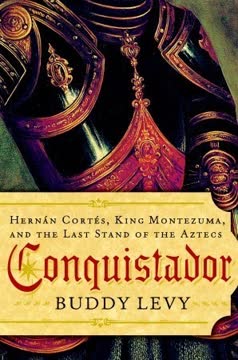

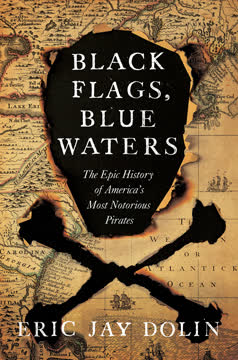

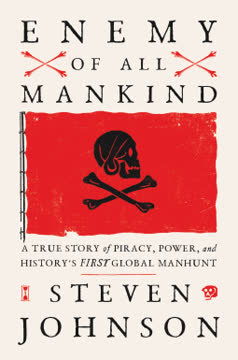

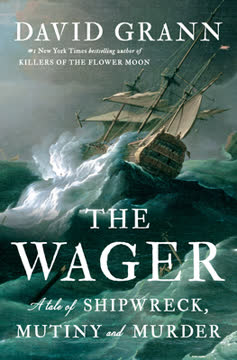
Download PDF
Download EPUB
.epub digital book format is ideal for reading ebooks on phones, tablets, and e-readers.
